Tomato hornworms are a common pest in tomato plants, causing significant damage by feeding on leaves, stems, and fruits. They can transmit diseases and viruses, affecting growth and quality. Controlling them is challenging due to their high reproductive potential, wide host range, and cryptic behavior.
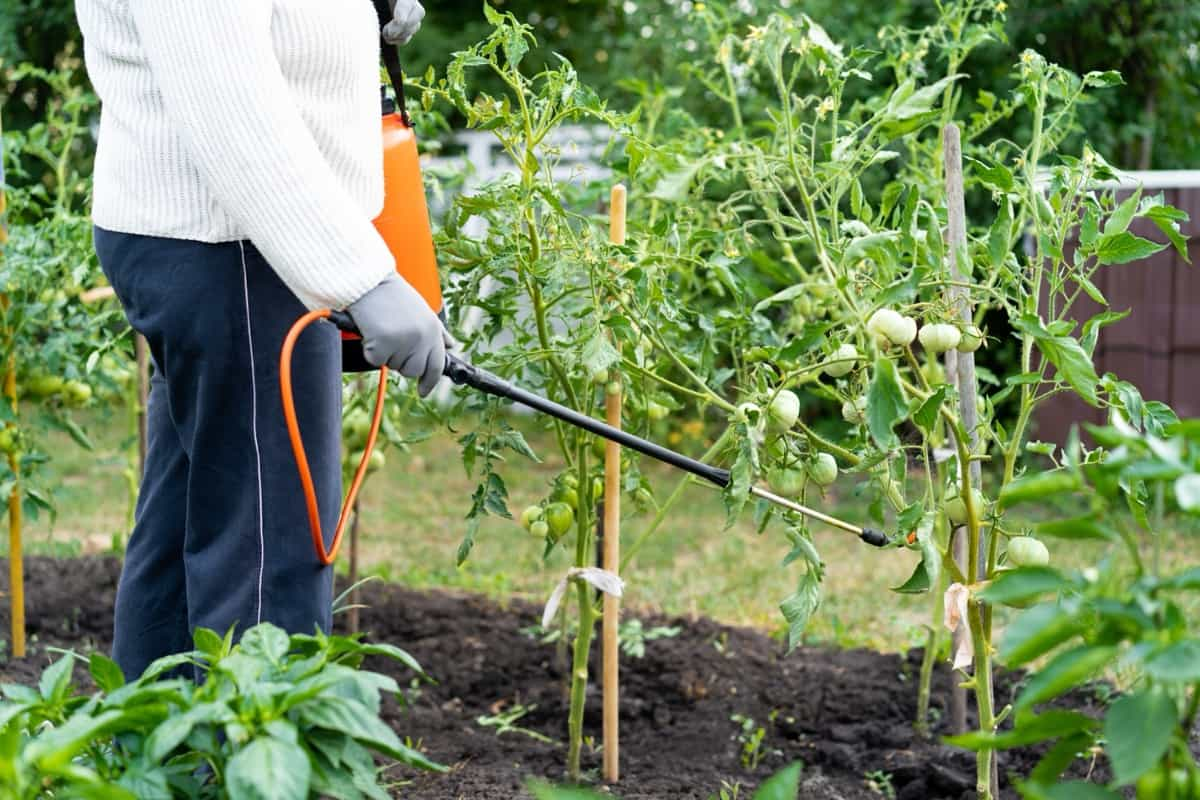
An integrated pest management (IPM) approach, which combines cultural, biological, and chemical methods, is recommended for effective management. IPM minimizes the use of pesticides and maximizes the use of natural enemies and beneficial insects, making it a sustainable and environmentally friendly method.
Tomato Hornworm Management
Overview of Tomato Hornworms
Tomato hornworms are the larval stage of the five-spot hawk moth, a nocturnal insect that belongs to the order Lepidoptera. They are native to North America and can be found throughout the United States, Canada, and Mexico. They feed on plants in the family Solanaceae, which includes tomatoes, peppers, eggplants, potatoes, tobacco, and nightshade.
Tomato hornworms arelargest caterpillars in North America, reaching up to four inches in length. They have a green body with white V-shaped markings along their sides and a black or red horn on their rear end. They have six pairs of prolegs (fleshy appendages) and three pairs of true legs on their thorax. They have a pair of eyespots on their head that resemble eyes.
Tomato hornworms are voracious feeders that can consume up to 40% of their body weight in a day. They prefer to feed on the young and tender parts of the plant, such as the leaves, stems, buds, and fruits. They can strip a plant foliage in one days, leaving behind only bare stems and damaged fruits. They can also introduce pathogens and viruses to the plant through their saliva or feces, causing diseases like bacterial wilt or mosaic virus.
Tomato Hornworm Life Cycle
Tomato hornworms have a life cycle consisting of four stages: egg, larva, pupa, and adult. The egg is laid by a female five-spot hawk moth on the host plant’s leaves or stems and hatches in 4-8 days. The larvae, pale green with black spots, molt five times and grow larger and darker with each molt. The larval stage lasts 3-4 weeks. Once fully grown, the larvae burrow into the soil to form a brownish-red, oval-shaped pupa.
The pupal stage lasts 2 to 4 weeks in summer or up to 8 months in winter. The adult emerges from the pupa, a brownish-gray moth with a wingspan of 3 to 5 inches, five orange spots on its abdomen, and long antennae resembling feathers. The adult lives for about a week, mates, and lays eggs.
Early Detection Techniques for Tomato Hornworm Infestations
One of the key steps to managing tomato hornworms is to detect them early before they cause significant damage. Tomato hornworms are large green caterpillars with white stripes and a horn-like projection on their tail. They can grow up to four inches long and blend well with the foliage of tomato plants.
In case you missed it: Weed Management in Tomato Crop: Common Weeds of Tomato and Herbicides Safe for Tomatoes
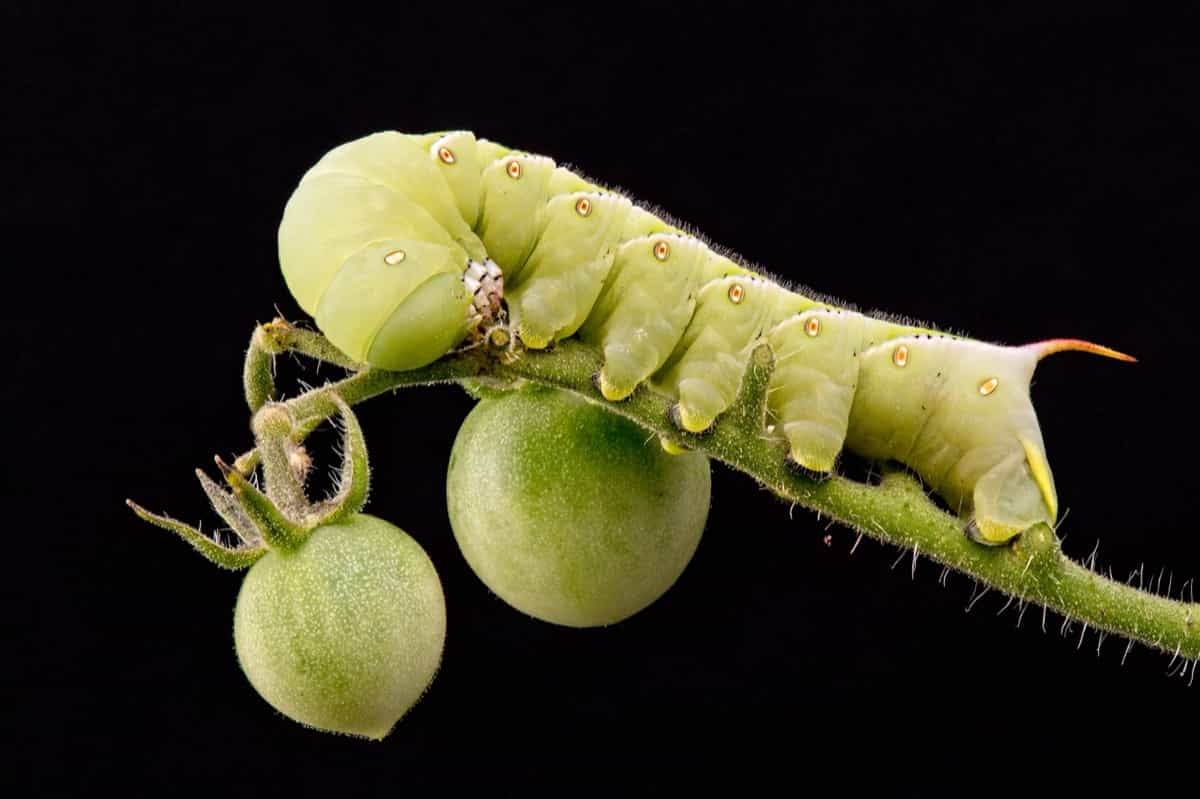
To spot them, look for signs of feeding damage, such as holes in the leaves, stems, and fruits, as well as droppings on the ground. You can also use a flashlight at night to see them more easily. If you find any tomato hornworms, remove them by hand or with a pair of scissors and dispose of them in a bucket of soapy water or the trash.
Organic Control Methods for Tomato Hornworms
If you prefer to use organic methods to control tomato hornworms, there are several options available. One of them is to use biological control agents such as parasitic wasps, predatory bugs, and nematodes that can kill or reduce the population of tomato hornworms. Beneficial insects planting flowers nectar and pollen, such as marigolds, dill, fennel, and yarrow.
Another option is to use organic pesticides such as neem oil, spinosad, or Bacillus thuringiensis (Bt), which are derived from natural sources and have an impact on the environment and human health. These pesticides can be sprayed on the tomato plants according to the label instructions and should be applied when the caterpillars are young and small.
When and How to Use Chemical Pesticides Against Tomato Hornworms
If organic methods are not effective or feasible, you may need to resort to chemical pesticides to control tomato hornworms. They can harm beneficial insects, pollinators, wildlife, and human health. Some of the chemical pesticides that can be used against tomato hornworms are carbaryl, permethrin, cyfluthrin, and esfenvalerate.
These pesticides should be applied when the caterpillars are young and small before they cause extensive damage. They should also be applied in the evening or early morning, when the temperature is cooler and the wind is calm, to avoid drift and evaporation.
Natural Predators of Tomato Hornworms
Tomato hornworms have several natural enemies that can help reduce their numbers and damage. Some of these predators are birds, bats, lizards, frogs, spiders, ants, beetles, and mice. These predators can feed on the eggs, larvae, pupae, or adults of tomato hornworms and prevent them from completing their life cycle. To encourage these predators in your garden, you can provide them with shelter, water, food sources, and nesting sites. For example, you can install birdhouses, bat boxes, rock piles, brush piles, mulch layers, bird baths, and feeders.
Integrated Pest Management Strategies for Tomato Hornworm Control
Integrated pest management (IPM) is a method that uses multiple methods to control pests effectively and environmentally. It involves four steps: monitoring, identification, decision-making, and intervention. For tomato hornworm control, IPM involves regular monitoring, correct pest identification, determining acceptable pest levels, and appropriate intervention. Methods include cultural, mechanical, biological, and chemical approaches.
Cultural methods involve choosing resistant varieties, rotating crops, sanitizing tools, and removing debris. Mechanical methods involve hand picking, trapping, and pruning. Biological methods involve releasing or attracting natural enemies, and chemical methods involve using organic or synthetic pesticides.
DIY Homemade Solutions for Controlling Tomato Hornworms in Home Gardens
To control tomato hornworms in your home garden, try DIY homemade solutions using natural ingredients. Garlic spray can be made by crushing garlic cloves and steeping them in water, straining the liquid, and adding dish soap. Hot pepper spray can be made by blending hot peppers with water, straining the liquid, and adding dish soap.
Epsom salt spray can be made by dissolving a tablespoon of salt in water and spraying it on your tomato plants. Vinegar spray made by mixing equal parts of vinegar and water. These solutions can help repel or kill tomato hornworms by affecting their sense of smell, taste, or digestion. However, they may damage your plants’ foliage, so test them on a small area first and avoid spraying them on hot or sunny days.
In case you missed it: How to Stake Your Tomato Plants: With Simple Steps, Step-By-Step Process, Methods, and Different Ways

Professional Tips for Large-scale Tomato Hornworm Management
To effectively manage tomato hornworms in large-scale tomato farms or greenhouses, follow these professional tips: regularly monitor tomato fields with pheromone traps, use degree-day models to predict emergence and plan control measures, use selective pesticides targeting only tomato hornworms, use precision agriculture techniques like drones, sensors, and GPS for accurate pesticide application, and use integrated pest management strategies that combine multiple methods for an environmentally friendly and effective control. These strategies help in maintain the health and productivity of your tomato plants.
Impact of Tomato Hornworms on Tomato Yield and Quality
Tomato hornworms can have a significant impact on the yield and quality of tomato crops. They can reduce the yield by feeding on the leaves, stems, fruits of tomato plants, which reduces the photosynthesis, transpiration, and nutrient uptake of the plants. They can also reduce the quality by causing cosmetic damage to the fruits, such as holes, scars, bruises, and rot.
Additionally, they can transmit diseases and pathogens, such as viruses, bacteria, fungi, and nematodes, to the tomato plants. These diseases and pathogens can cause symptoms such as wilting, yellowing, stunting, curling, spotting, blighting, and canker. Therefore, it is important to control tomato hornworms before they cause significant losses to your tomato crop.
Using Companion Planting to Deter Tomato Hornworms
Companion planting is growing plants together that can deter pests by repelling them with odors or flavors, confusing them with diversity, or attracting their natural enemies. Some plants that can be used as companions for tomatoes to deter tomato hornworms include basil, which has a strong scent and enhances the flavor and growth of tomatoes.
Borage, an edible flower with hairy leaves, can deter tomato hornworms and attract bees and pollinators. Marigolds, with their pungent smell and spicy taste, can attract beneficial insects like parasitic wasps and predatory bugs that can kill or reduce the population of tomato hornworms. Nasturtiums, with their spicy taste, can also trap aphids and other pests that may harm tomatoes.
Tomato Hornworm Diet: What They Feed On?
Tomato hornworms are herbivorous insects that primarily feed on nightshade plants like tomatoes, potatoes, eggplants, peppers, and tobacco. They chew through plant tissues and suck out juices using their strong mandibles and long proboscis. They feed at night or during cloudy days and hide under leaves or soil during the day. They can consume up to 40 times their body weight in a single day, making them voracious and destructive pests.
Signs of Tomato Hornworm Damage and How to Respond
Tomato hornworms are large green caterpillars with white and black markings and a horn-like tail. They feed on leaves, stems, fruits of tomato plants, causing ragged holes, droppings, and wilted leaves. If left unchecked, they can defoliate entire plants and ruin the crop. To respond to tomato hornworm damage, you should inspect plants regularly and remove any caterpillars by hand or with a pair of scissors.
You can also use organic insecticides such as Bacillus thuringiensis (Bt) or neem oil to kill the larvae. Alternatively, you can attract natural predators such as parasitic wasps, birds, or ladybugs to your garden to control the hornworm population.
Biological Control Agents for Managing Tomato Hornworms
To manage tomato hornworms effectively, use biological control agents, such as parasitic wasps, birds, and ladybugs. Parasitic wasps lay eggs inside caterpillars, then hatch and feed on the host, eventually killing the pest. They spin white cocoons on the caterpillar, indicating the pest is no longer a threat.
Birds, such as chickadees, cardinals, or robins, can eat tomato hornworms if they spot them on your plants. Attracting birds to garden can be done through feeders, birdbaths, or nesting boxes. Ladybugs, beneficial insects that feed on pests and eat their eggs, can also reduce their numbers.
In case you missed it: State Wise Tomato Farming Seasons in India: Growing Best Varieties and Production Yield
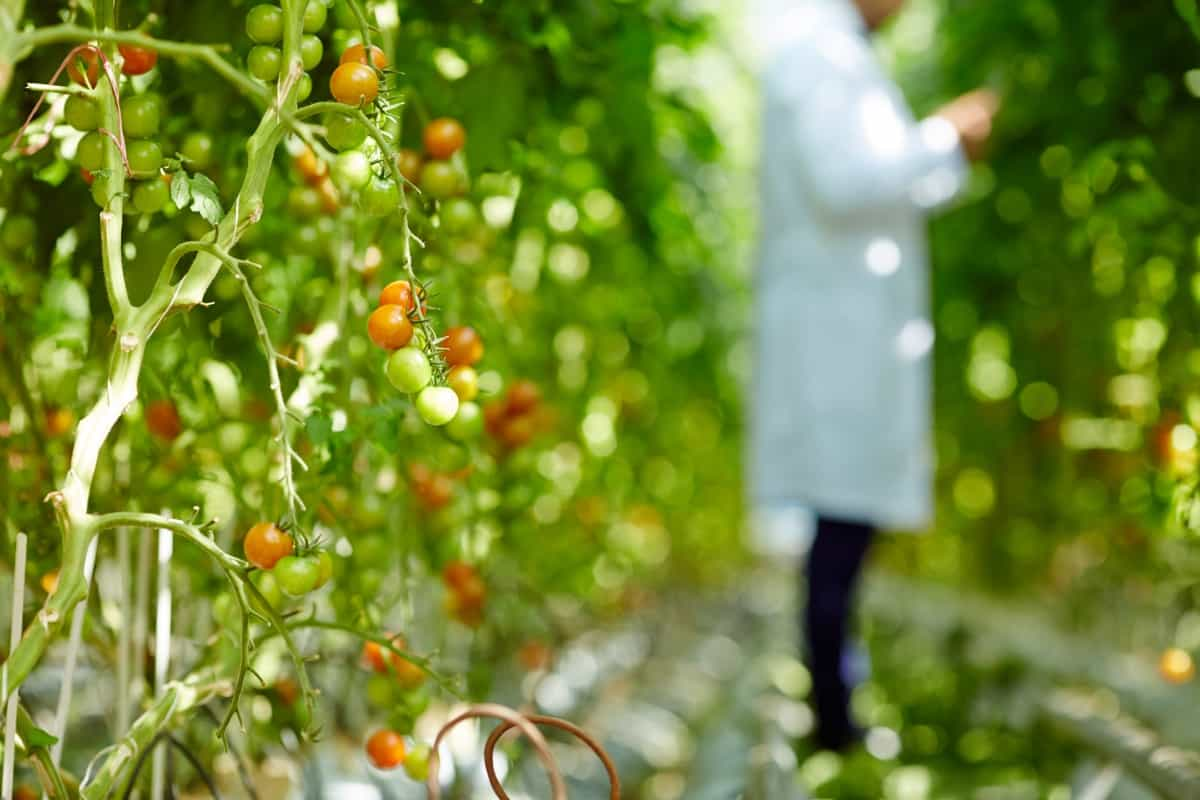
Innovative Technologies in Tomato Hornworm Detection and Control
Tomato hornworm detection and control are challenging due to their camouflage and appetite. Innovative technologies like drones, sensors, and artificial intelligence have been developed to help farmers and gardeners manage this pest. Drones can identify infestations by spotting damage or droppings on plants, while sensors can monitor plant growth and detect stress caused by hornworms.
Artificial intelligence can analyze data collected by drones or sensors and provide recommendations for detecting and controlling hornworms, as well as optimize resource use like water, fertilizer, and insecticides.
In case you missed it: Tomato Farming Business Plan: A Production and Cultivation Guide for Beginners
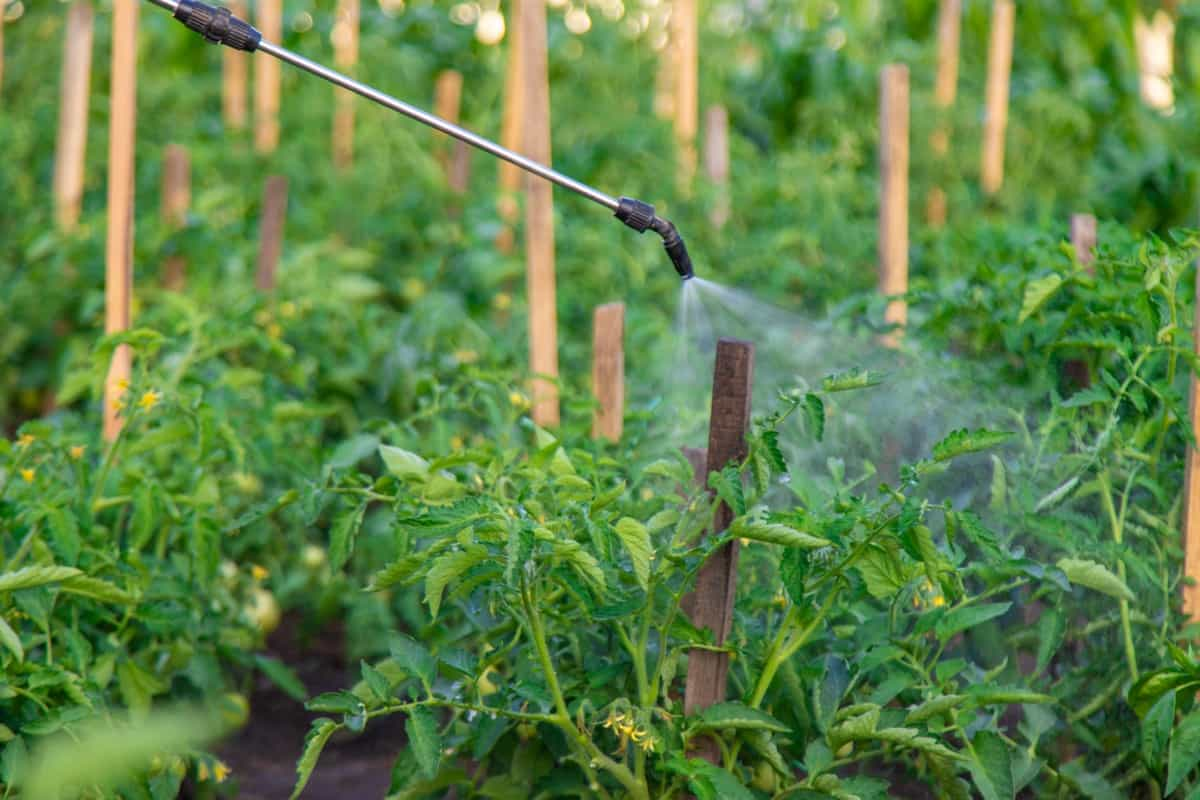
Seasonal Patterns of Tomato Hornworm Activity and Prevention Tips
Tomato hornworms have a seasonal pattern based on their life cycle and climate. They have two generations per year in warmer regions and one in cooler regions. The first generation emerges in late spring from overwintering pupae in the soil, laying eggs on tomato leaves. The second generation emerges in mid-summer and repeats the process.
To prevent damage, plant tomatoes early in the season, rotate crops annually, cover plants with row covers or netting, remove weeds or debris that may harbor hornworms or their hosts, and harvest tomatoes regularly. Dispose of damaged or fallen fruits.
How to Revive Tomato Plants After Hornworm Damage
Tomato plants can recover from moderate hornworm damage with proper care. To revive them, prune damaged or diseased branches or leaves, water them regularly, fertilize them with a balanced organic fertilizer, mulch with organic matter like straw, grass clippings, or compost, and stake or cage them to support their stems and prevent bending or breaking. Regular watering and nutrient-rich fertilization can help boost plant growth and vigor. This will help prevent further infestations and ensure the health of your tomato plants.
In case you missed it: High Yield Tomato Varieties in India: A Farmer Guide for Good Profits
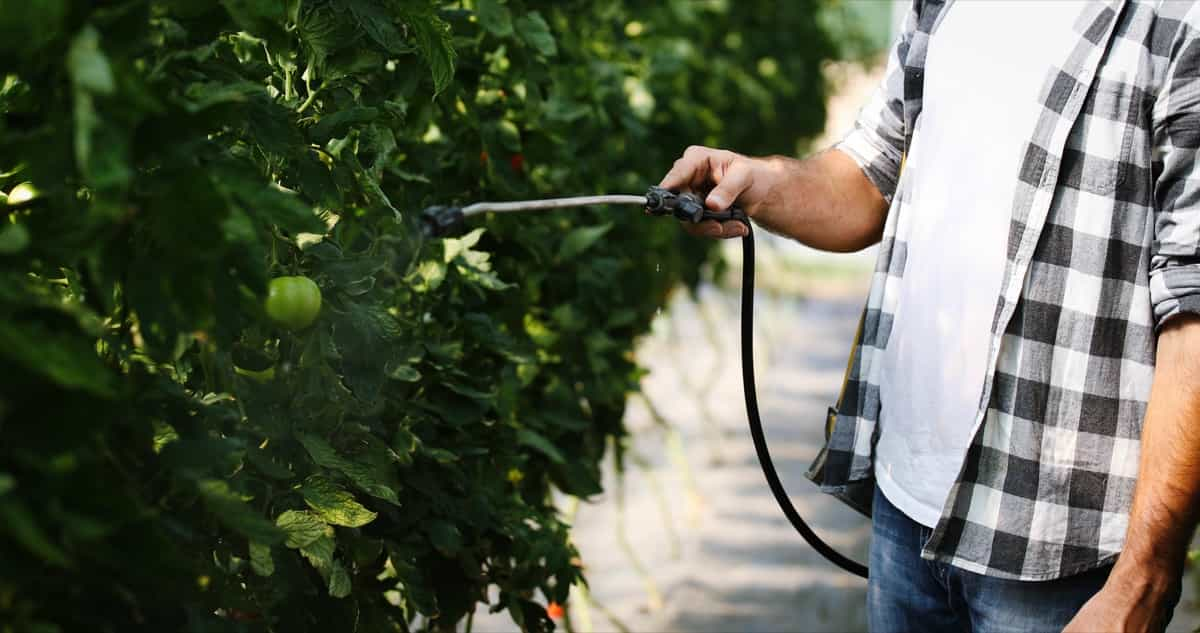
Conclusion
Mastering Tomato Hornworm management is essential for thriving tomato crops. This guide provides a scientific overview, precise control measures, and effective prevention strategies against the notorious Five-Spotted Hawk Moth. By integrating organic solutions and strategic practices, cultivators can ensure the health and vitality of their tomato plants.
- Types of Pesticides Used in Agriculture: A Beginner’s Guide
- Economical Aquaculture: A Guide to Low-Budget Fish Farming
- 15 Common Planting Errors That Can Doom Your Fruit Trees
- How to Make Houseplants Bushy: Effective Tips and Ideas
- Innovative Strategies for Boosting Coconut Pollination and Yield
- Pollination Strategies for Maximum Pumpkin Yield
- The Complete Guide to Chicken Fattening: Strategies for Maximum Growth
- Natural Solutions for Tulip Problems: 100% Effective Remedies for Leaf and Bulb-Related Issues
- Revolutionizing Citrus Preservation: Towards a Healthier, Greener Future
- Natural Solutions for Peony Leaf and Flower Problems: 100% Effective Remedies
- Maximizing Profits with Avocado Contract Farming in India: A Comprehensive Guide
- Natural Solutions for Hydrangea Problems: 100% Effective Remedies for Leaf and Flowers
- The Ultimate Guide to Choosing the Perfect Foliage Friend: Bringing Life Indoors
- From Sunlight to Sustainability: 15 Ways to Use Solar Technology in Agriculture
- The Ultimate Guide to Dong Tao Chicken: Exploring from History to Raising
- The Eco-Friendly Makeover: How to Convert Your Unused Swimming Pool into a Fish Pond
- Mastering the Art of Delaware Chicken Farming: Essentials for Healthy Backyard Flocks
- 20 Best Homemade Fertilizers for Money Plant: DIY Recipes and Application Methods
- How to Craft a Comprehensive Free-Range Chicken Farming Business Plan
- Brighten Your Flock: Raising Easter Egger Chickens for Beauty and Bounty
- How to Optimize Your Poultry Egg Farm Business Plan with These Strategies
- Subsidy for Spirulina Cultivation: How Indian Government Schemes Encouraging Spirulina Farmers
- Ultimate Guide to Raising Dominique Chickens: Breeding, Feeding, Egg-Production, and Care
- Mastering the Art of Raising Jersey Giant Chickens: Care, Feeding, and More
- Ultimate Guide to Raising Legbar Chickens: Breeding, Farming Practices, Diet, Egg-Production
- How to Raise Welsummer Chickens: A Comprehensive Guide for Beginners
- How to Protect Indoor Plants in Winter: A Comprehensive Guide
- Ultimate Guide to Grow Bag Gardening: Tips, Tricks, and Planting Ideas for Urban Gardeners
- Guide to Lotus Cultivation: How to Propagate, Plant, Grow, Care, Cost, and Profit
- Agriculture Drone Subsidy Scheme: Government Kisan Subsidy, License, and How to Apply Online
- Ultimate Guide to Raising Araucana Chickens: Breed Profile, Farming Economics, Diet, and Care
- Bringing Hydroponics to Classroom: Importance, Benefits of Learning for School Students
- Ultimate Guide to Raising Polish Chickens: Breed Profile, Farming Economics, Diet, and Care
- Ultimate Guide to Raising Australorp Chickens: Profile, Farming Economics, Egg Production, Diet, and Care
- Silkie Chicken Farming: Raising Practices, Varieties, Egg Production, Diet, and Care
- Sussex Chicken Farming: Raising Practices, Varieties, Egg Production, Diet and Care